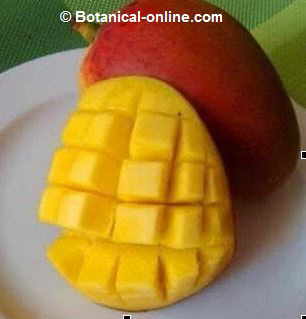Contents
Classes of vitamin E
DIFFERENT WAYS OF TAKING VITAMIN E
There are different types of vitamin E in food.
Although it is not very relevant to know the different types of vitamin E, this information should be included in your study.
In food and in the body, there are different forms of vitamin E, a set of different fat-soluble components divided into two groups.
Types of vitamin E

Mangoes are very rich in antioxidant vitamins A, C and E
The different types of vitamin E are:
- Tocopherols: Consisting of a saturated hydrocarbon chain. Types: alpha-tocopherol (the most antioxidant), beta-tocopherol (abundant in many foods), gamma-tocopherol (constituent of bile), and delta-tocopherol. The most known type of vitamin E is alpha-tocopherol, which has more potent antioxidant properties.
- Tocotrienols: Constituted by hydrocarbon chain with three unsaturations. Types: alpha-tocotrienol, beta-tocotrienol, gamma-tocotrienol and delta-tocotrienol
In summary, the most important thing about this classification is to know that alpha-tocopherols are the most antioxidant vitamin E type.
Why is vitamin E measured in alpha-tocopherol equivalents?
Through food we eat all forms of vitamin E, tocopherols and tocotrienols.
But in the tables of composition of foods always is the amount of vitamin E expressed in ” equivalent mg in alpha-tocopherol”, because it is the compound 100% with antioxidant activity.
In general, beta-tocopherol, which has 40-50% antioxidant activity, is often abundant in foods. To change from mg of beta-tocopherol to alpha-tocopherol, it is multiplied by 0.5 (because it has half the antioxidant activity), obtaining the “mg of vitamin E equivalents in alpha-tocopherol”.
With this calculation system based on the antioxidant activity, all the equivalences are made to express the vitamin E of the food in the same figures.
![]() More information on vitamin E.
More information on vitamin E.








